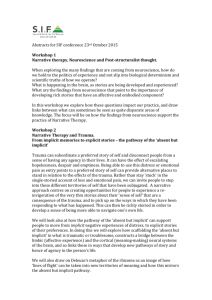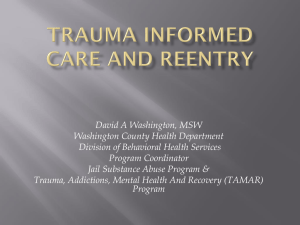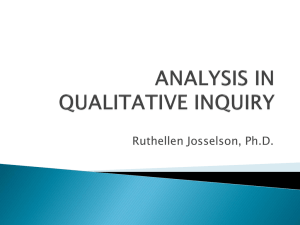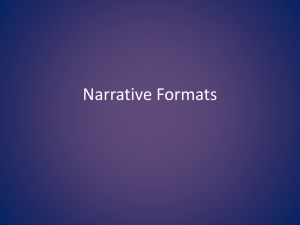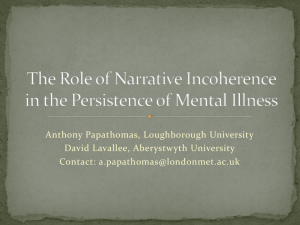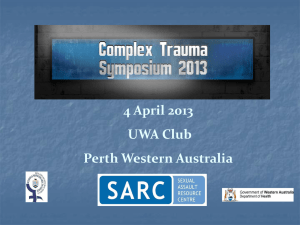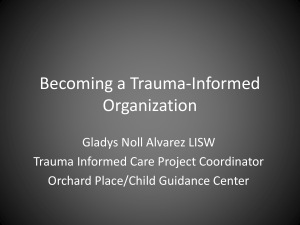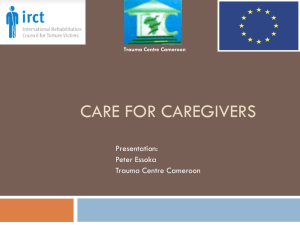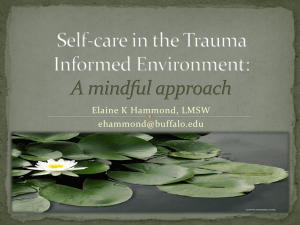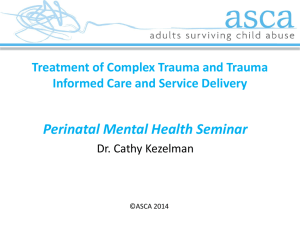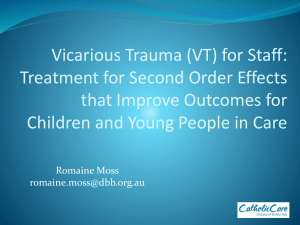Microsoft PowerPoint - the NCRM EPrints Repository
advertisement
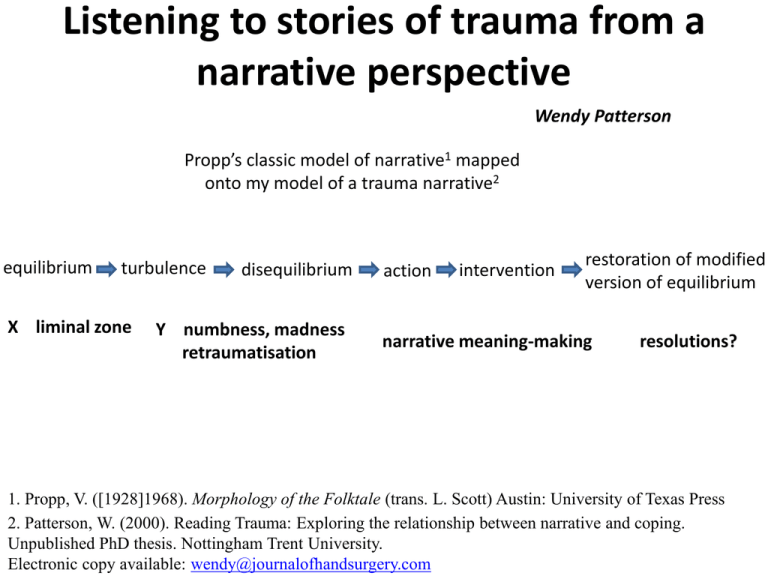
Listening to stories of trauma from a narrative perspective Wendy Patterson Propp’s classic model of narrative1 mapped onto my model of a trauma narrative2 equilibrium turbulence X liminal zone disequilibrium Y numbness, madness retraumatisation action intervention restoration of modified version of equilibrium narrative meaning-making resolutions? 1. Propp, V. ([1928]1968). Morphology of the Folktale (trans. L. Scott) Austin: University of Texas Press 2. Patterson, W. (2000). Reading Trauma: Exploring the relationship between narrative and coping. Unpublished PhD thesis. Nottingham Trent University. Electronic copy available: wendy@journalofhandsurgery.com 1. X liminal zone Y: ‘I was just doing X when Y’3 • • • • • • equilibrium disturbed/ XY structure the construction of suddenness the destruction of agency the liminal zone imaginary stories and their evaluative role the injustice of traumatic experience4 3. Wooffitt, R. (1992) Telling Tales of the Unexpected. Hemel Hempstead: Harvester Wheatsheaf 4. Janoff-Bulman, R. (1996) Shattered Assumptions. Towards a New Psychology of Trauma. New York: The Free Press 2. Disequilibrium: numbness, madness and retraumatisation • • • • • • metaphor and the dialectic of trauma5 the specificity of the meaning of ‘mad’ behaviour retraumatisation; XY structure imaginary stories and the reverse face of history rendering the experience6 the narrative as testimony to the self who has survived and as archive of the life lost. 5. Herman, J. L. (1992) Trauma and Recovery. London: Basic Books 6. Ricoeur, P. (1991) Life in Quest of Narrative in D. Wood (ed.) On Paul Ricoeur. Narrative and Interpretation. London: Routledge 3. Narrative meaning-making • • • • • causation blame guilt and fighting talk comparators as evaluative devices7 social- and self-comparisons8 7. Labov, W. (1972) Language in the Inner City: Studies in the Black English Vernacular.Oxford: Basil Blackwell 8. Taylor, S.E., Wood, J.V. and Lichtman, R.R. (1983) It Could Be Worse: Selective Evaluation as a Response to Victimization. Journal of Social Issues 39(2):19-40 4. Resolutions? endings are two-fold/Janus faced: an ending (the outcome or result), and a beginning, the beginning of a life beyond the trauma is contained in the ending of the trauma story, and the ending of the trauma story is contained within a new beginning, or the promise of a new beginning.



